Affiliate links on Android Authority may earn us a commission. Learn more.


Garmin vivomove Sport review: The intersection of style and substance
Published onMarch 10, 2023

Garmin Vivomove Sport
MSRP:
What we like
What we don't like

Garmin Vivomove Sport
We’ve come to expect a lot from Garmin devices, and the Garmin vivomove Sport doesn’t disappoint. A welcome addition to the vivomove series, the Sport is the model for users who care about their fitness as much as their fashion. Device highlights include a “hidden” display, classy colorways, and the caliber of health and wellness tools we now expect from most Garmin watches. Overall, it’s a well-priced hybrid smartwatch that will fit into any watch box. Learn more in our full Garmin vivomove Sport review.
Update, March 2023: This review has been updated to include new devices from Garmin and competitors.
What you need to know about the Garmin vivomove Sport
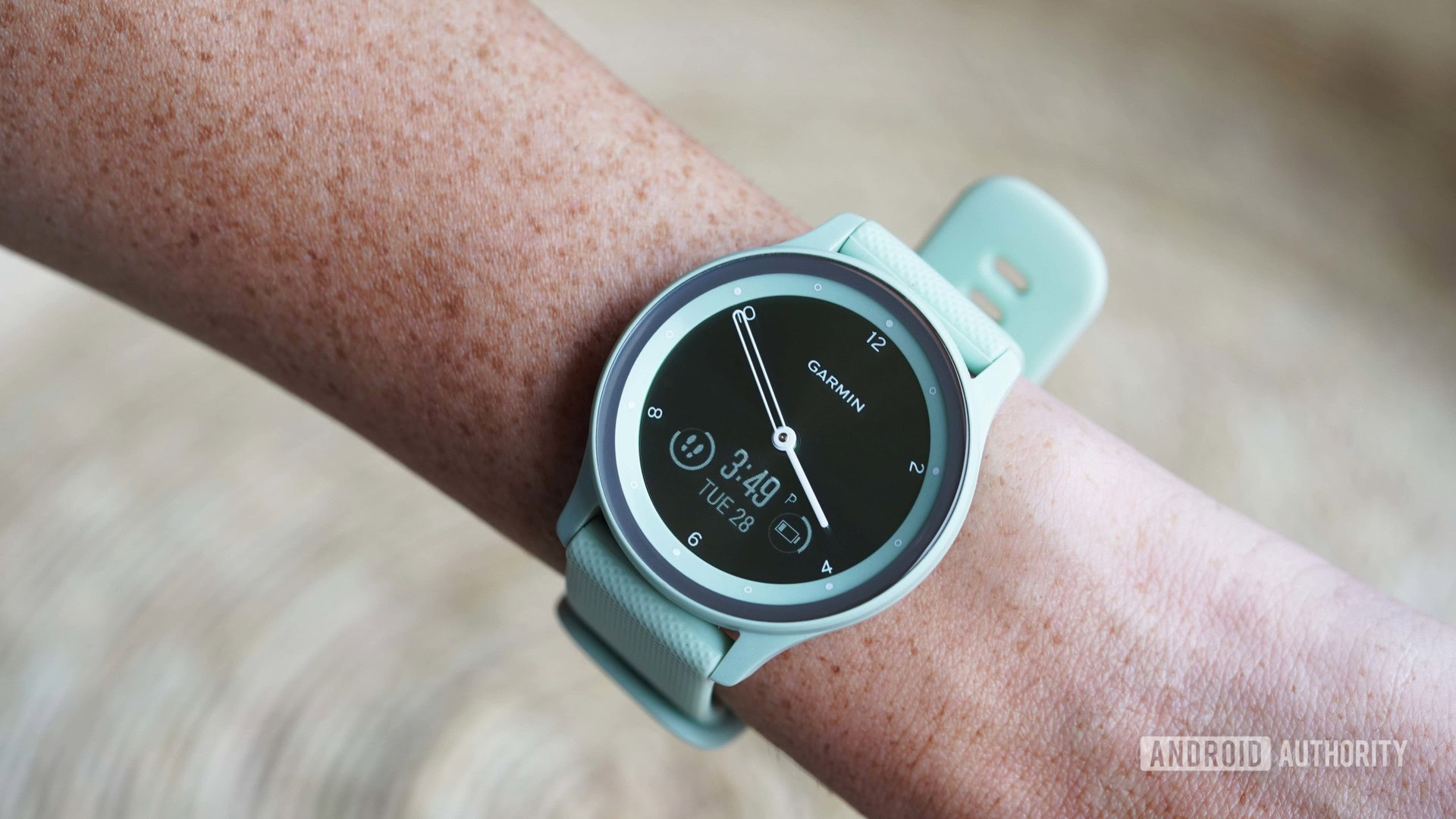
- Garmin vivomove Sport: $179.99 / £159.99 / €179.99
Not everyone who wants smartwatch data wants a smartwatch look. The vivomove Sport is an entry-level device from Garmin’s hybrid smartwatches series launched in January 2022. The device is designed to transition from the weight room to waiting for drinks. It boasts built-in sports apps and many of Garmin’s top health and wellness features, plus smartwatch features for staying connected. Meanwhile, with physical ticking hands and metallic accents, it offers a polished look you can wear almost anywhere.
The Garmin vivomove Sport can pair with both Android and Apple smartphones. It’s available in four colorways, including brown, black, white, and a soft green inspired by typical wellness aesthetics. You can also personalize the look of your device on Garmin’s website with Watch Your Way. Pricing for the Garmin vivomove Sport starts at $179.99. As of this article’s publication, the device is available on Garmin’s website.
How’s the design?
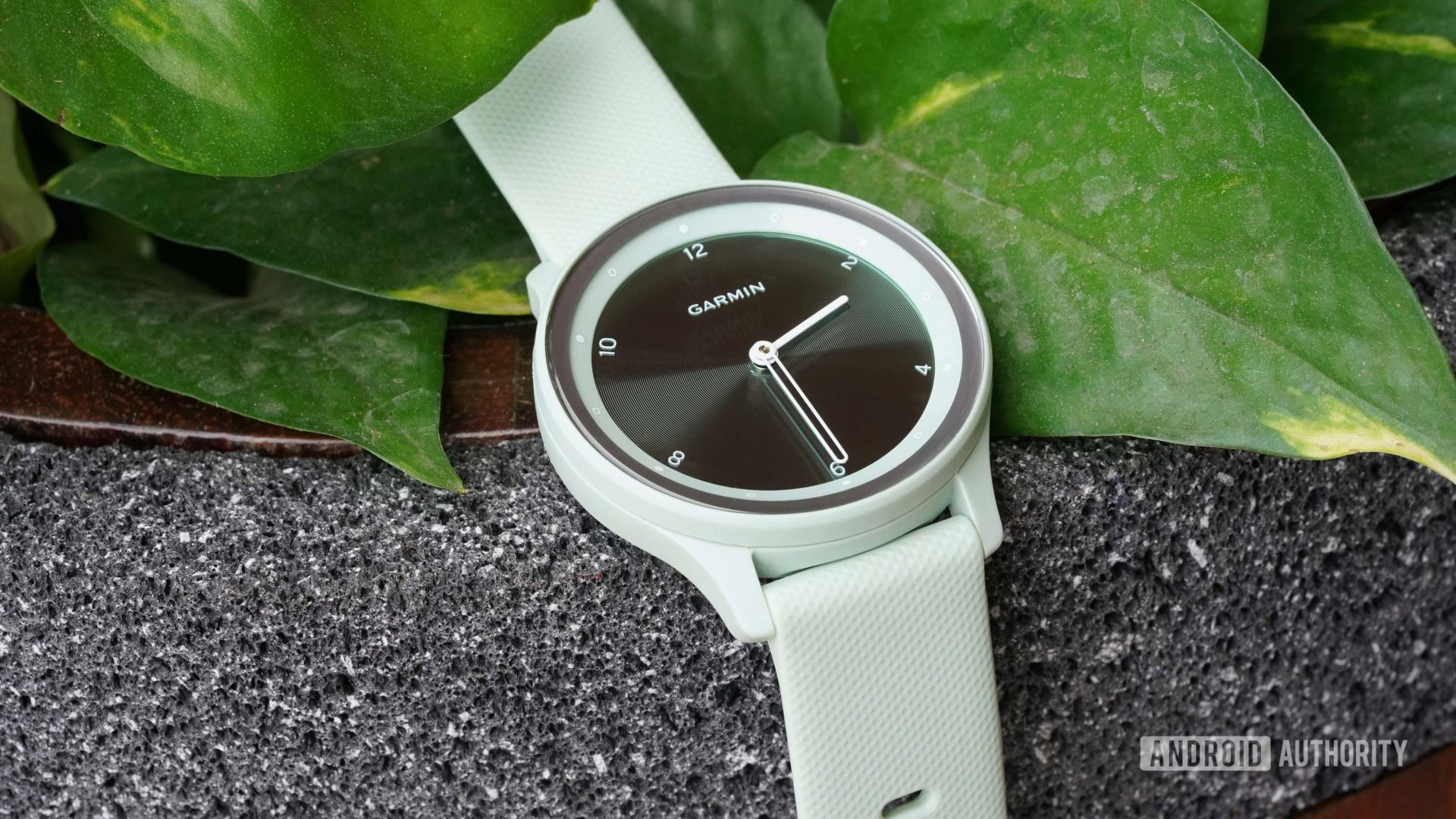
In a sea of oversized touchscreens, sporty fitness trackers, and digital displays, hybrid devices offer something unique: elegance as well as information. The Garmin vivomove Sport is one such device, and it does so nearly flawlessly, hiding a full suite of smartwatch features behind a sleek, analog timepiece.
The watch case is a lightweight hard plastic available in the four colorways mentioned above. These design choices suggest a sportiness that coincides with the device’s name. I tested the soft green option that’s meant to embody a sentiment of wellness. I’m not saying the color alone will transport you to spa-like zen, but it certainly emanates a calming aesthetic. I also found it comfortable for all-day wear.
The vivomove Sport drops the metallic bezel of the Vivomove 3, minimizing the detailing to a ring around the watch face. In the vivomove Sport, the metallic feature is below the surface and cannot be seen from the side of the case. The real show stopper is the analog watch face and hidden touch screen. I can’t say enough about the ticking watch hands and dynamic display.
Setting aside that it's a beautiful watch at first glance, there's a real spy tech vibe about the seamless transition to smartwatch features.
Anyone with an inkling of a James Bond fantasy will love how the hands smoothly rotate to out-of-the-way positions at three and nine o clock whenever the “hidden” display is activated. This is a feature we’ve seen before in the vivomove lineup, but it hasn’t gotten old.
Once you activate the “hidden” menu with a quick double-tap, the display is easy to read in most lighting. I occasionally ran into trouble in especially bright sunlight, but overall the design is functionally sound.

The silicone band is soft and comfortable. It doesn’t have the clingy, rubberized feel of some smartwatch bands that often attract dust and debris. Additionally, each colorway features a plastic clasp that matches the watch case, rather than a metallic accent. Again, this is another element that positions this device in the sport category rather than as a luxe accessory. I liked the continuous green hue throughout every aspect of the band and found it very comfortable for sleeping. However, if the silicone band isn’t for you, no sweat. It should also fit most standard 20mm quick-release options from third-party retailers.
How does it perform?
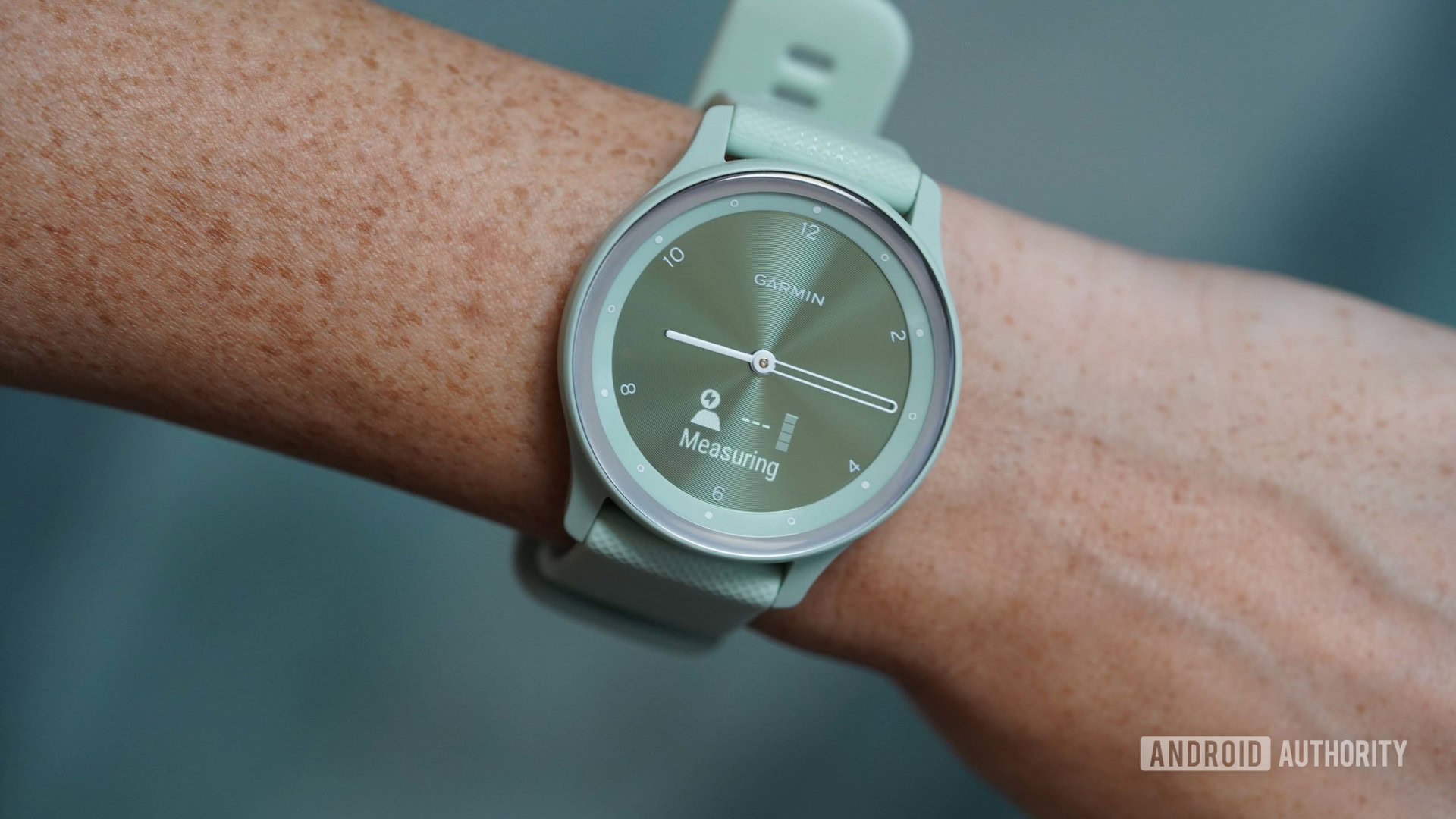
Day to day, the Garmin vivomove Sport’s performance is adequate. To wake the “hidden” screen, you either tap twice on the watch face or lift and rotate your wrist. Once the screen is on, swiping left or right lets you scroll through widgets. If you hold down the touch screen, you can access the device’s main menu including timed activities, heart rate features, settings, and more. From here, you swipe left or right to scroll through options, then tap to make a selection. Swiping between menu options and widgets is smooth and quick. With limited room for information on the screen, navigating takes some getting used to. Once you get the hang of it, it’s straightforward enough.
Battery life is noteworthy, but not endless. The device will last about five days on a single charge and drop into a watch-only mode when the battery is low to provide one more day of analog use. I found the extra day relatively pointless, but I suppose it may come in handy in the right situation.
It tracks all the basic health stats, including steps, daily calorie burn, active calories, distance, and total active time. It also collects sleep data, 24/7 heart rate, and stress data. It’s important to keep in mind that this device offers just the essentials. With that expectation, many features of the vivomove Sport, including Garmin’s Body Battery energy monitoring and all-day stress tracking feel like pleasantly surprising and helpful bonus features.
Many of the health tracking tools on the Garmin vivomove Sport feel like pleasantly surprising and helpful bonus features.
Calculated using heart rate variability (HRV), stress, sleep quality, and activity, Body Battery estimates how much energy you have available. Garmin’s stress tracking feature measures users’ stress levels throughout the day based on HRV. I found both of these numbers to be helpful insights into my overall feelings of wellness throughout the Garmin vivomove Sport review period.
On average, my stress score was comparable to my perceived stress levels, and my body battery aligned with how I felt. On multiple days, I found the relationship between my body battery and my sleep data to be especially helpful in understanding why I felt unusually drained in the middle of the day.
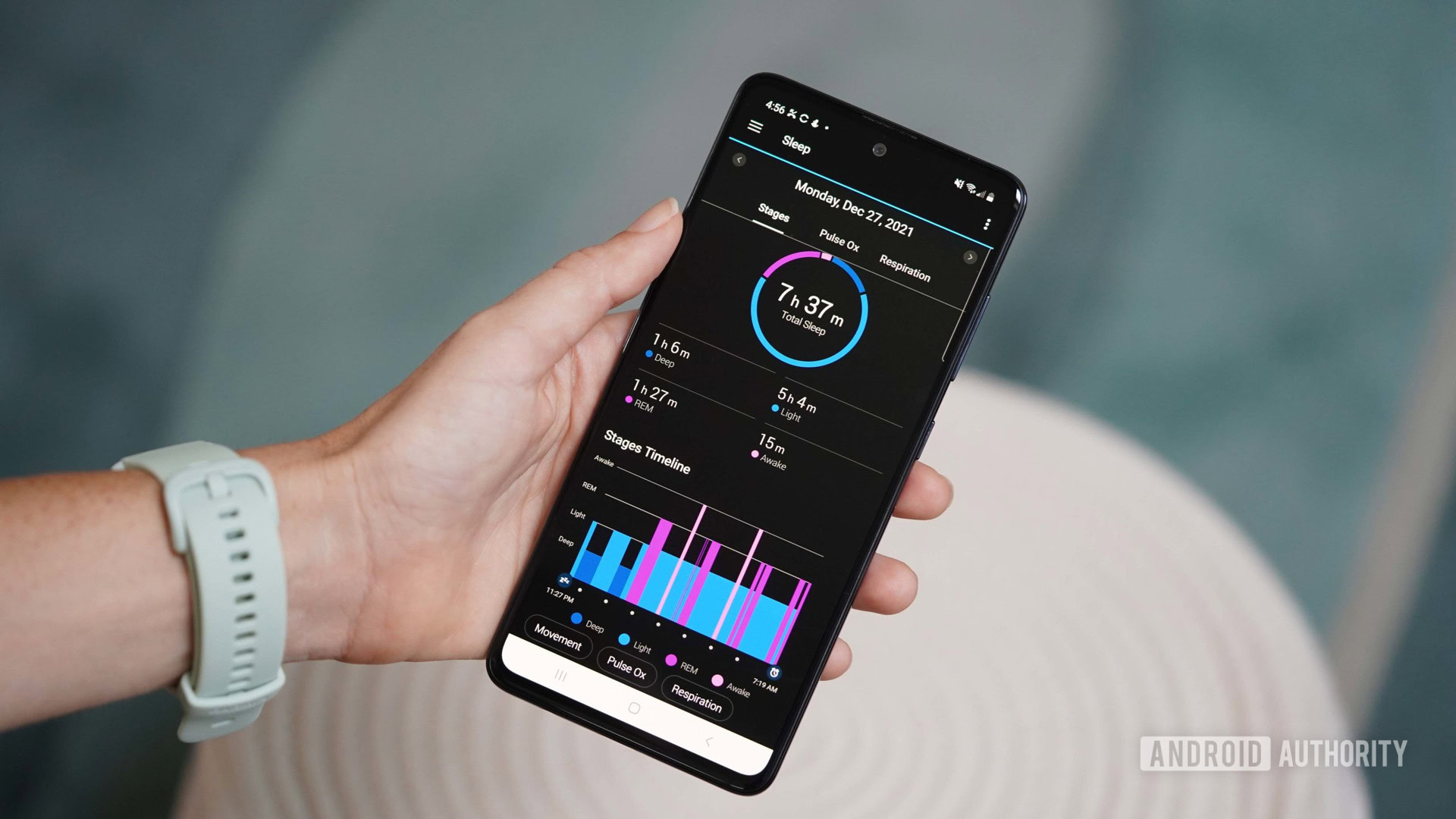
The vivomove Sport also provides advanced sleep tracking, including sleep stages. In the image above, you can see the device picked up on when I fell asleep and when I woke, as well as when I got up twice during the night. Once synced to the Garmin Connect app, you can analyze your sleep stages and other advanced sleep data under the Pulse Ox and Respiration tabs. This data alone isn’t all that easy to digest to the casual observer. I would have loved to see this device offer Garmin’s Sleep Score.

It goes without saying that connected GPS is a bit of a drag for runners and cyclists who don’t want to lug their phones on a run or ride. I can’t hold it against the Garmin vivomove Sport too much, considering the device’s hybrid nature (and approachable price tag). On the other hand, with “Sport” in the device name, GPS is a feature worth discussing.
First, it’s worth noting that since connected GPS is ultimately showing your phone’s GPS data, it’s not really a direct comparison to the other fitness watches we’re testing here. I tested the Garmin vivomove Sport’s connected GPS paired to a Samsung Galaxy A51 for this review. Overall, the results weren’t terrible for an entry-level device. For tracking casual workouts and hikes, it’s enough to get users some helpful info. The image above shows two sections of a run where the Garmin outperforms the Fitbit Versa 3. Compared to the notably accurate GPS of the Apple Watch Series 6, the Fitbit device recorded on the wrong side of the road, but the Garmin stayed on track.
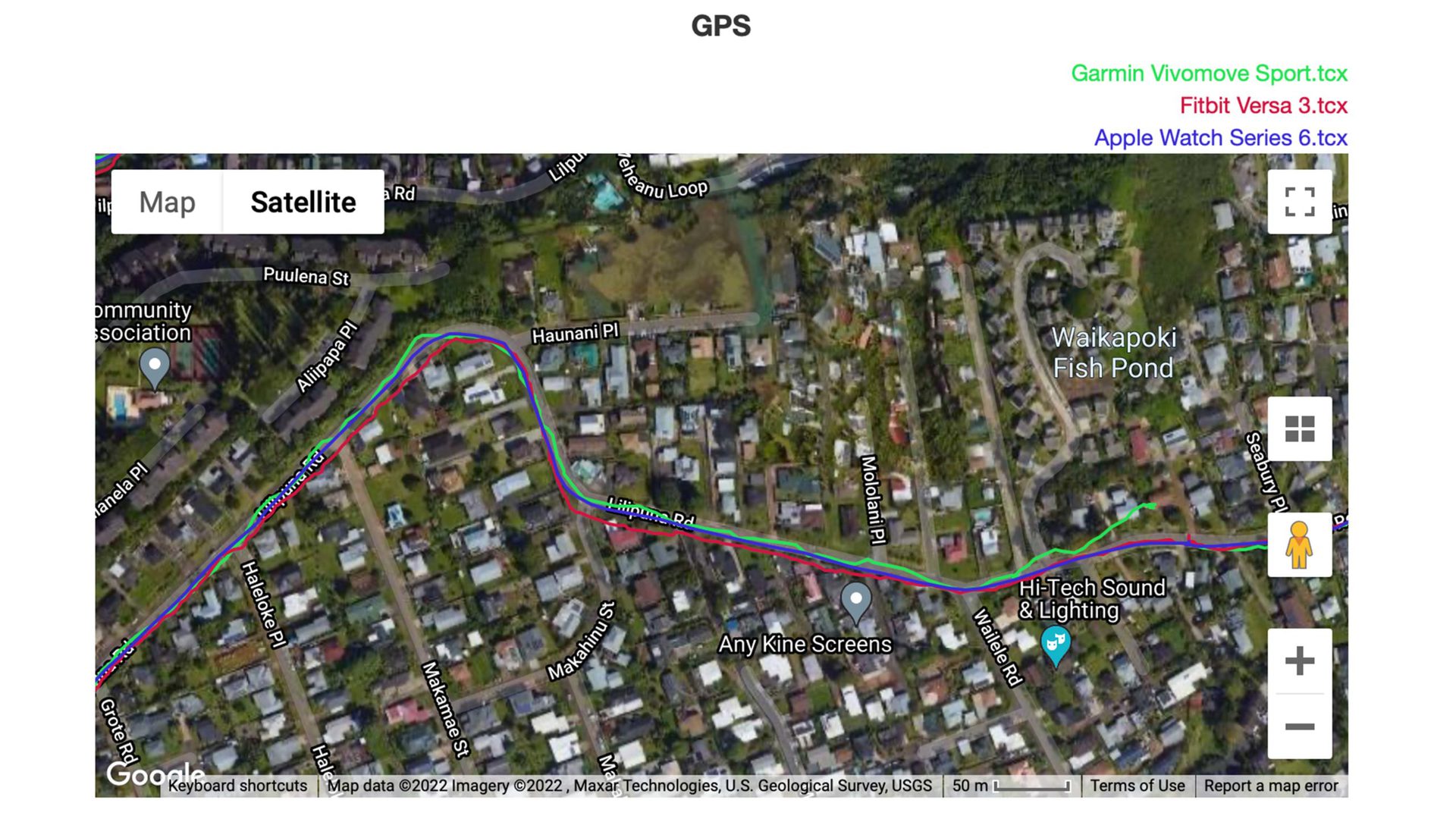
In this second image above, the Garmin is less consistent. This mapped data represents the beginning of the loop run. You can see the Garmin struggled to lock on to my location and started recording seemingly in a stranger’s living room. It then struggled for a block or so before falling into pace with the Apple Watch data. Runners looking for performance-grade GPS accuracy typically have to pay for it. Again, if you’re deciding whether to wear your hybrid watch on a run, it’s the prospect of carrying your connected device that will likely be the dealbreaker, not the finicky data.
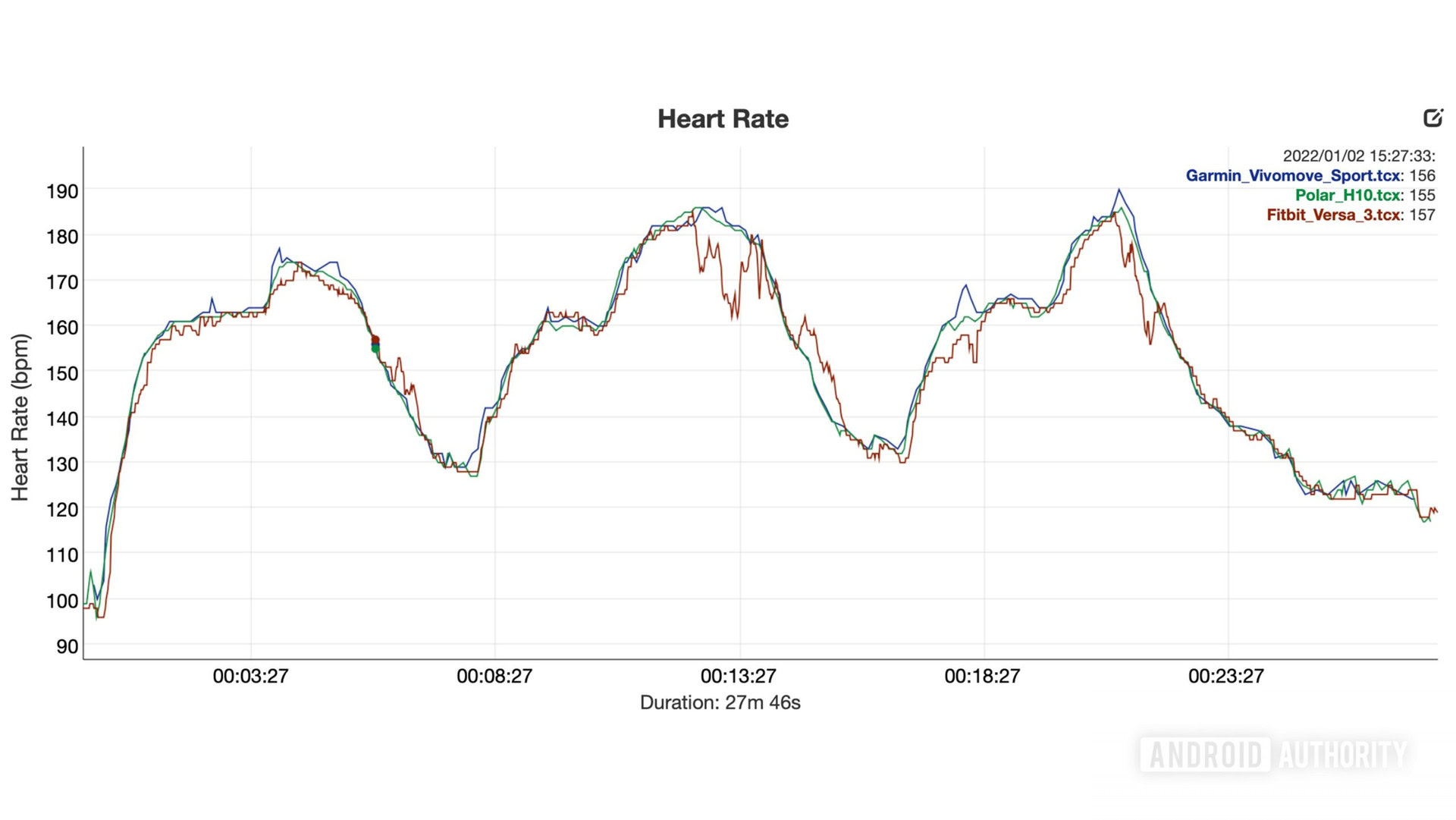
Meanwhile, the heart rate sensor proved decent for a device at this price point. Users can view their heart rate in real-time, set up alerts for high or low heart rate readings, and review their data in the Garmin app. The image below shows how the heart rate monitor performed during a workout I completed for this Garmin vivomove Sport review.
There are certainly some spastic moments and inconsistencies. Still, overall it stayed fairly close to data from a Polar H10 chest strap, especially compared to the Fitbit Versa 3 (priced similarly to the Garmin watch). I tested all three devices simultaneously during an interval workout. For the most part, the Garmin fared best when my heart rate was declining, and struggled to keep up when I pushed myself. It also slightly overshot each peak. That being said, the margin of error wasn’t huge.
The Garmin vivomove Sport is more than capable of providing basic heart rate info for the average person. If you are someone looking for the absolute most accurate, detailed heart rate data, you’re probably not in the market for a hybrid device anyway.
Anything else?
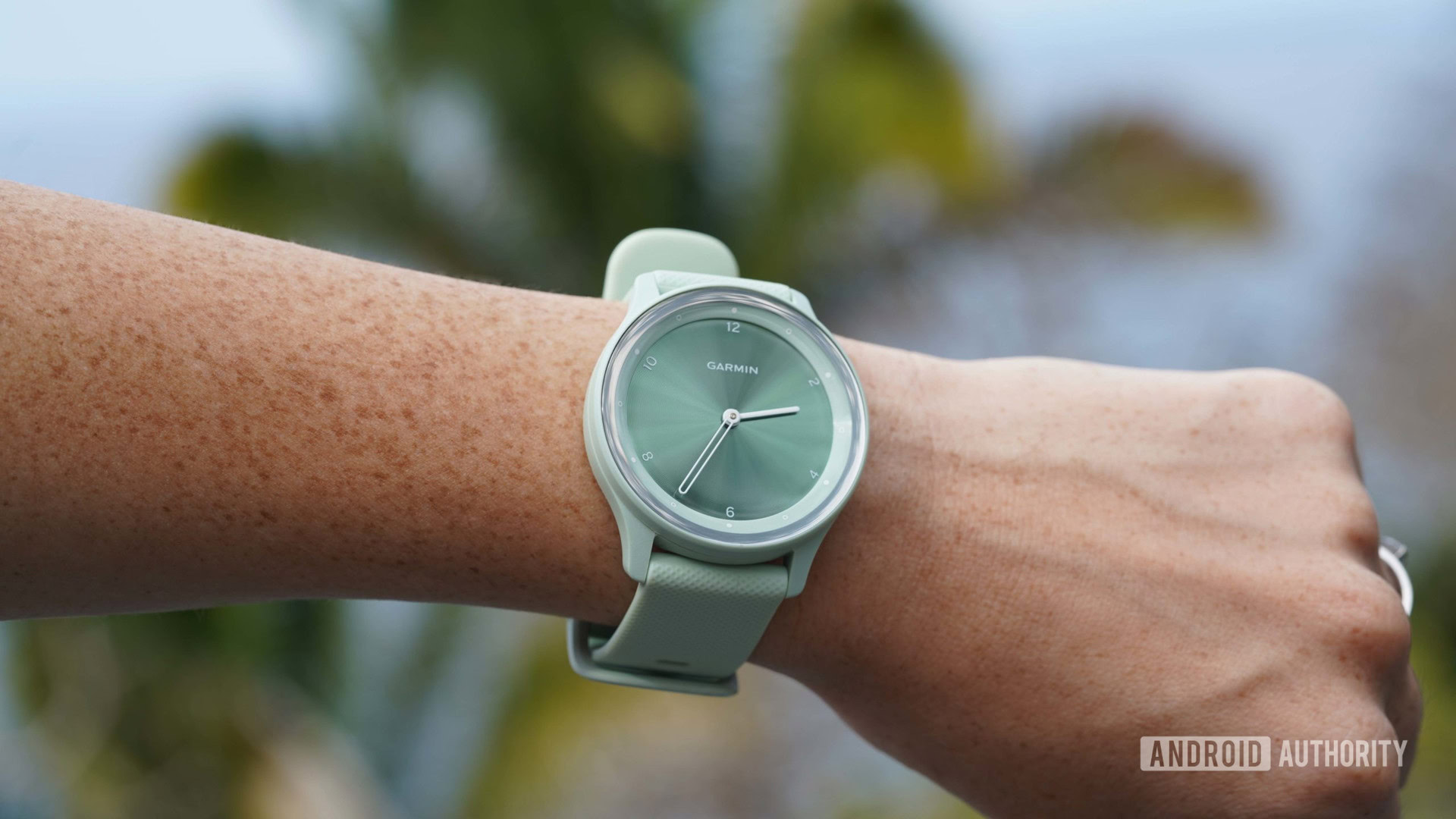
- Smart notifications: You can receive on-screen alerts for incoming calls and text messages, plus emails, social media updates, and calendar events. If your paired phone is an Android device, you can respond to texts right on your wrist.
- Peace of mind: The vivomove Sport also offers a few workout-related safety measures. If your device detects an incident during activity, it will alert emergency contacts with an automated message, including your GPS location. Garmin LiveTrack also allows users to invite loved ones to follow training sessions in real time.
- Guided breathing: On-wrist breathing exercises guide users through a series of inhales and exhales in an effort to reduce stress. On the vivomove Sport, these exercises are easy to follow and, for me, often result in a lowered heart rate.
- Built-in sport modes: You can track data for specific exercises, including walking, running, strength training, cycling, yoga, and cardio. You can also add or remove activities via the Garmin app.
- Women’s health: The vivomove Sport provides at-a-glance info about users’ monthly cycle. Users can access menstrual cycle and pregnancy tracking in the Garmin Connect app.
- Regular updates: As with most of its devices, Garmin regularly pushes out updates to the vivomove Sport. Since the initial publishing of this review in January 2022, the watch has seen several new patches and features. This includes new breathwork, Pilates, and treadmill activities, improvements to battery life, and more.
Value and competition


The Garmin vivomove Sport is a great value. It’s a good-looking device offering a solid introduction to smartwatch capabilities. It’s a fair price for a device that doesn’t include GPS but does provide a full suite of health and wellness tools. Plus, throughout this review, we found little not to like about the Garmin vivomove Sport. For a significant price bump, Garmin’s newer vivomove Trend ($269 at Amazon) offers an elevated look and added features including Garmin Pay and wireless charging.
Outside the ecosystem, the Fossil Gen 6 Hybrid Wellness Edition ($209 at Amazon) is another stylish hybrid smartwatch from Fossil Group. It’s a slightly dressier option offering even longer battery life than the vivomove Sport, plus its own innovative twist, an e-ink display. Overall, it’s an attractive device, but its software and fitness tracking do fall short.
Of course, if you can spring even higher, the Withings ScanWatch ($299 at Amazon) is our top pick for the best overall hybrid smartwatch. It has a top-notch build quality plus an ECG, a pulse oximeter, connected GPS, and a fairly accurate heart rate sensor. It’s even been clinically validated to notify users of signs of atrial fibrillation and overnight breathing disturbances. It’s also hard to compete with its month-long battery life.
Meanwhile, if Garmin’s ecosystem isn’t for you and you’re willing to sacrifice the sophistication of the hybrid look, there’s another option. The Fitbit Versa 3 ($158 at Amazon) offers plenty of fitness-tracking features and excellent sleep tracking, as well as Google Assistant and Amazon Alexa support. It can also often be found on sale, especially since the Versa 4 ($199 at Amazon) is now on the scene. We don’t recommend the newer model as it drops key features that make the last generation so valuable.
Garmin vivomove Sport review: The verdict
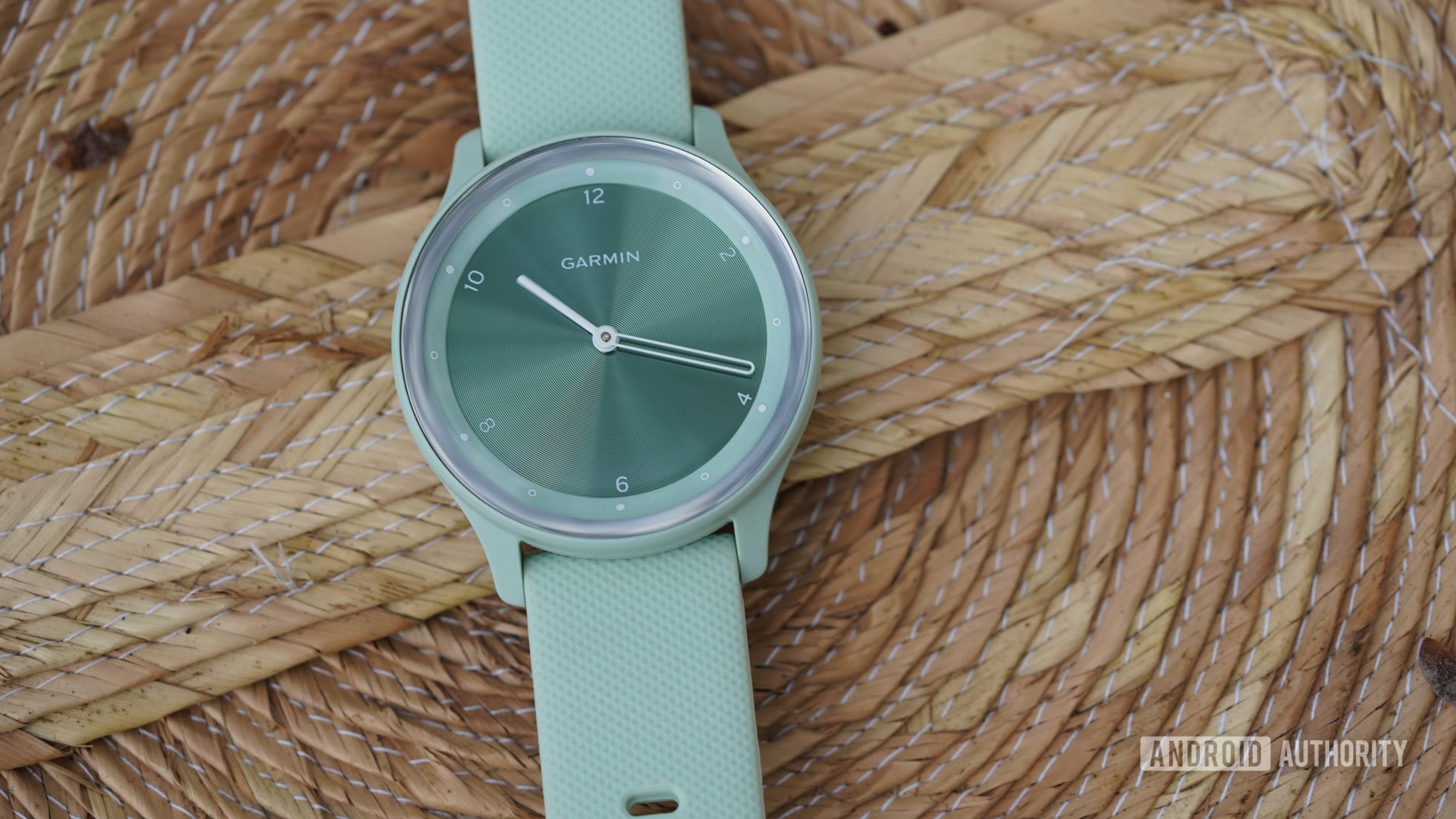
If you’re committed to a classy accessory first and smartwatch features second, we recommend the Garmin vivomove Sport. Its unique display and athletic design elements add up to a device that’s as versatile as your everyday life. While writing this review, I wore it everywhere, from a formal Christmas dinner, to horseback riding, to chasing children around the soccer field. I also wore it to bed, comfortably sleeping off each exhausting day.
The vivomove Sport fits right into your life so you can focus on your health and wellness goals without wearing them on your sleeve.
This isn’t the device for someone who is all-in on smartwatches or someone who is hardcore about advanced health and fitness tracking. For either of those users, there are devices with larger displays, better platforms, and more advanced sensors. If you’re an Apple user in that camp with a hefty budget, opt for the Apple Watch Series 8 ($329 at Amazon). If you’re keen on Wear OS, grab a Samsung Galaxy Watch 5 ($162.57 at Amazon).
However, if you want an affordable, stylish analog watch with entry-level smartwatch features, then stay right here. The Garmin vivomove Sport is a well-performing and well-designed device that won’t break the bank.
Top Garmin vivomove Sport questions and answers
No, the Garmin vivomove Sport uses Garmin’s wired charging system common across most of the company’s modern products.
The Garmin vivomove Sport does not have built-in GPS support. However, it can use connected GPS when tethered to a smartphone.
If you’re on a strict budget or want a hybrid smartwatch, the vivosport Move is an adequate running watch if you don’t mind taking your phone along for the journey. However, you might want to consider a running watch with built-in GPS instead.